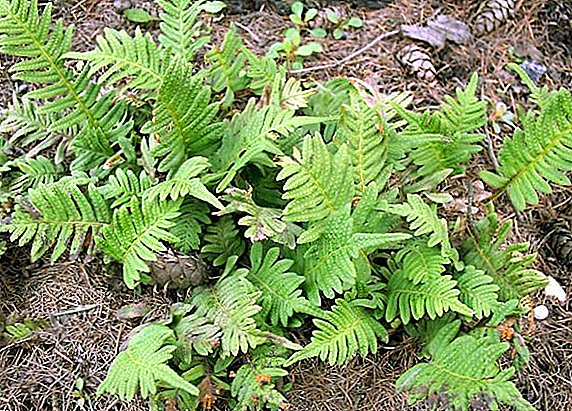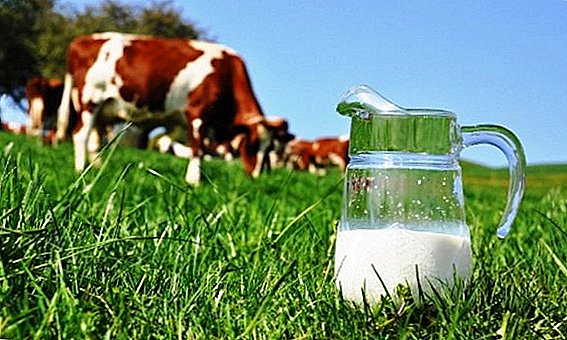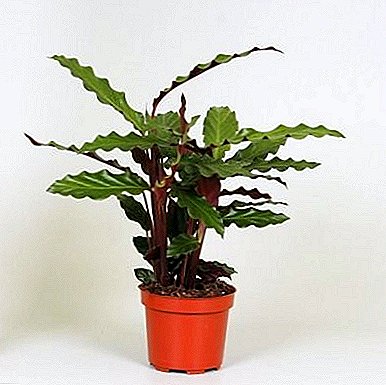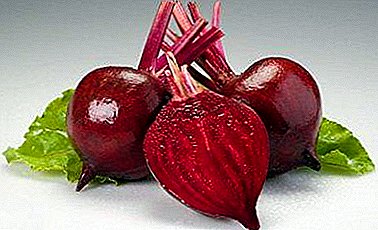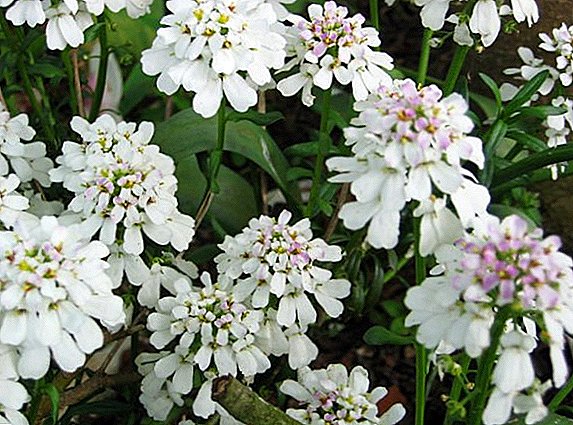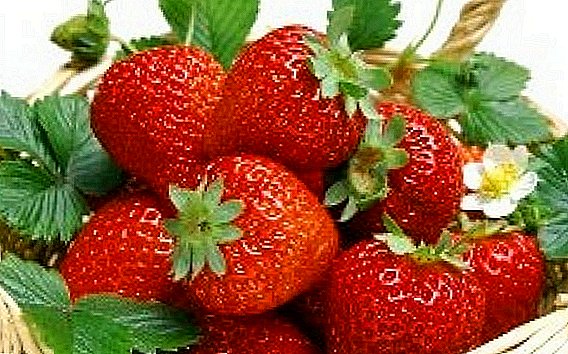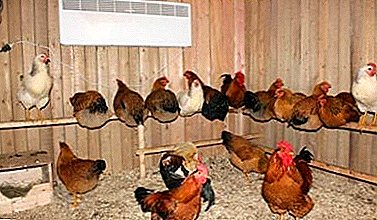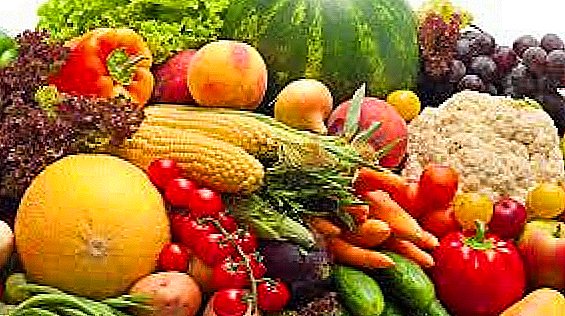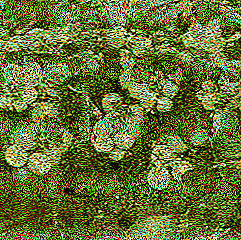
Low-growing neat varieties of tomatoes are convenient, do not require special care, they can be grown right at home in flower pots. Varieties "Orange Cap" and "Yellow Cap" are just like that.
Developed by Russian breeders, the originator is the Research Institute of Vegetable Growing. Registered in the State Register of the Russian Federation for cultivation in the open field and as a pot culture in 2011.
In our article you will find a lot of useful information about these tomatoes: descriptions of varieties, their characteristics and growing features.
Yellow and Orange cap: description of varieties
| Grade name | Yellow and Orange Beanie |
| general description | Early ripe determinant variety of tomatoes |
| Originator | Russia |
| Ripening | 80-90 days |
| The form | Round, small |
| Colour | Yellow orange |
| Average tomato mass | 30 grams |
| Application | Dining room |
| Yield varieties | 1.5-3 kg per square meter |
| Features of growing | It is necessary to observe the mode of watering |
| Disease resistance | Resistant to major diseases of tomatoes |
 These varieties differ only in the color of the fruit, according to the type of bush, the shape of the fruit, the degree of ripening - they are similar. Plants are determinant. The determinant plant does not require artificial growth stops, they grow to a certain height and direct all forces to the development of fruits. About indeterminantny grades read here.
These varieties differ only in the color of the fruit, according to the type of bush, the shape of the fruit, the degree of ripening - they are similar. Plants are determinant. The determinant plant does not require artificial growth stops, they grow to a certain height and direct all forces to the development of fruits. About indeterminantny grades read here.
By type of bush - standard. The stem plant is usually small in size, compact, the root system is poorly developed. The plant does not require pinching and tying. Stem resistant, strong, no more than 50 cm high, usually 20-30 cm. It has several brushes of a simple type. The root system is poorly developed, small in size, growing in different directions without deepening.
The leaves are medium in size, dark green, in shape - tomato type, the structure is wrinkled, has a tendency to twist. No pubescence. The inflorescence is simple, intermediate type. The first inflorescence is laid over 5 - 6 leaves, then comes with a gap of 1 leaf, sometimes without a gap.
Stem with articulation. Fruits on the plant are kept well. According to the degree of maturation, it is an early variety, after most shoots only 80 - 90 days pass before the time of harvest. It has a high degree of resistance to tobacco mosaic, Alternaria, verticillosis, Fusarium. It does not have time to get late blight due to rapid maturation.
Suitable for greenhouse cultivation, open ground with insulation (under the film, in the greenhouse) and the cultivation of varieties as a houseplant - on the balcony or window sill. The yield from one bush of any “Caps” is about 0.5 kg. From 1 sq.m. You can get about 1.5 kg, sometimes up to 3 kg. When winter plantings in the room will not bear fruit without additional highlighting.
You can compare this indicator with other varieties in the table below:
| Grade name | Yield |
| Orange and Yellow Beanie | 1.5-3 kg per square meter |
| Grandma's Gift | up to 6 kg per square meter |
| American ribbed | 5.5 kg from a bush |
| De Barao the Giant | 20-22 kg from a bush |
| King of the Market | 10-12 kg per square meter |
| Kostroma | up to 5 kg from a bush |
| The president | 7-9 kg per square meter |
| Summer resident | 4 kg from a bush |
| Nastya | 10-12 kg per square meter |
| Dubrava | 2 kg from a bush |
| Batyana | 6 kg from a bush |
 Read also on our website: How to grow tasty tomatoes in a greenhouse all year round? What varieties have high immunity and good yield?
Read also on our website: How to grow tasty tomatoes in a greenhouse all year round? What varieties have high immunity and good yield?How to get excellent yields in the open field? Subtleties growing early ripe varieties of tomatoes.
A photo



Advantages and disadvantages
Among the advantages of these tomatoes are usually noted:
- early maturity;
- beautiful fruits;
- high taste qualities;
- resistance to major diseases.
The disadvantages include:
- low yield;
- short storage period;
- poorly tolerated transportation.
Specifications
 The shape of both varieties is round, low-ribbed. Sizes small - about 3-4 cm in diameter, weight about 30 g. The skin is thick, thick, smooth, shiny. The color of unripe fruits is pale green. The ripe fruit of the “Orange Hat” has an orange or dark yellow color, while the “Yellow Hat” has a light yellow and yellow color.
The shape of both varieties is round, low-ribbed. Sizes small - about 3-4 cm in diameter, weight about 30 g. The skin is thick, thick, smooth, shiny. The color of unripe fruits is pale green. The ripe fruit of the “Orange Hat” has an orange or dark yellow color, while the “Yellow Hat” has a light yellow and yellow color.
The flesh is soft, juicy. There are few seeds, evenly spaced in 2 chambers. The amount of dry matter is below average. The storage is not for long, the correct approach will help to prolong storage - to store in a dark place in a room with room temperature, without sudden drops (allowable interval +/- 5 degrees).
Transportation is bad, the fruits quickly lose their shape. Reviews of taste qualities are only excellent, they note the wonderful aroma and sweet taste of tomatoes, sweeter than those of red tomatoes. Contains a large number of nutrients, do not cause allergies. It is preferable to use fresh, but after freezing or hot processing tomatoes are also useful.
Ideal for preserving whole fruits - a dense skin will not let the tomatoes lose their shape. Suitable for the production of original tomato paste, ketchup, sauces and juice.
You can compare the weight of tomatoes with others in the table below:
| Grade name | Fruit weight |
| Orange and Yellow Beanie | 30 grams |
| Diva | 120 grams |
| Yamal | 110-115 grams |
| The Golden Fleece | 85-100 grams |
| Golden heart | 100-200 grams |
| Stolypin | 90-120 grams |
| Raspberry jingle | 150 grams |
| Caspar | 80-120 grams |
| Explosion | 120-260 grams |
| Verlioka | 80-100 grams |
| Fatima | 300-400 grams |
Features of growing
It is resistant to cracking the fruit on the plant. Fruits crack due to sudden changes in humidity as a result of the difference between day and night temperatures. It is necessary to regulate the humidity when watering plants. It should not exceed 60% when grown.
In greenhouse or indoor conditions may grow in any region. The most favorable for cultivation in open ground are the southern regions.
The cultivation of the Orange and Yellow Caps should begin with the sowing of seeds for seedlings. Seeds should be disinfected in a weak solution of potassium permanganate - put for an hour, then rinse with warm water. The soil, if it is not purchased in specialized stores, must also be decontaminated.
Important! The soil for planting tomatoes, you must choose loamy, you can sandy, well-air-enriched, with low acidity.
How to mix soil for tomatoes independently read in this article. And also about what kind of soil tomatoes prefer in greenhouses and how to properly prepare the soil in the greenhouse for spring planting.
The soil temperature at planting should be about 25 degrees. Seeds in late March or early April are planted in a wide, shallow container with a distance of 2 cm from each other, a depth of 2 cm. The soil is compacted and shed with warm water. Cover with a dense material that does not allow evaporation - polyethylene, plastic, thin glass. Humidity in the tank will give stimulation for seed germination; growth stimulants can be used.
After most shoots cover to remove. Seedlings watering as needed. When 2 leaflets form on plants, it is necessary to perform a pick. Picks - planting plants in individual containers (300 ml). Need for the formation of a strong root system in seedlings. Fertilizer can be added to the containers.
Feed dressing hold 2 times. Hardening seedlings spend a week before disembarking at a permanent place. If you plan to grow tomatoes at home, hardening is not necessary. At the age of 50-55 days seedlings can be transplanted. With outdoor growing, take care of temporary insulation (film). In the greenhouse or open ground planting is carried out at a distance of 50 cm from each other.
Watering is carried out under the root abundantly. Loosening, weeding - as needed. Masking or forming a bush is not required. Tying is not necessary, the stem and hand can easily withstand small fruits. Mulching when grown on the beds - on request.
Read more about all fertilizers for tomatoes.:
- Yeast, iodine, ash, hydrogen peroxide, ammonia, boric acid.
- Organic, mineral, phosphoric, complex, ready.
- Extra root, for seedling, when picking.
- TOP best.
How to dive tomatoes you can see on the video below:
Diseases and pests
Even with the promised disease resistance, preventive actions (biological sprayings) are necessary. Use special preparations of the general spectrum of action - against diseases and pests. Also carry out the disinfection of seeds and soil, thereby stopping some diseases immediately.
We bring to your attention the article about the main diseases of tomatoes in greenhouses and measures to combat them. And also, what is late blight, how to protect plants from it and which varieties do not suffer from late blight.
As for pests, the main problem is the Colorado potato beetle, thrips, aphids, spider mites and slugs. Insecticides will save insects, proven methods will help in the fight against slugs.
Tomatoes "Orange Cap" and "Yellow Cap" - a great option for growing right at home. The fruits are small, but incredibly tasty.
In the table below you will find links to varieties of tomatoes with different ripening terms:
| Early maturing | Middle late | Medium early |
| Pink meaty | Yellow banana | Pink king F1 |
| Ob domes | Titanium | Grandma's |
| King early | F1 slot | Cardinal |
| Red dome | gold fish | Siberian miracle |
| Union 8 | Raspberry wonder | Bear Paw |
| Red icicle | De barao red | Bells of Russia |
| Honey Cream | De barao black | Lev Tolstoy |


